Finishing repair of the facade of any house is worth attention, because over time, any building material tends to collapse and lose its attractiveness. Repair work on the sheathing of the frame of the house or on its cladding directly depends on the type of material from which the walls are built. If you are ready to do the exterior decoration of a country or country house with your own hands, we will answer all your questions and help you complete the repair quickly and efficiently.
Probably, you have not even thought about how wide the choice of finishing materials that can suit your home is: plaster, natural or decorative stone, lining, wood, metal, clay tiles, thermal panels and many others. No less wide is the range of colors, varieties of each of the materials. If the materials are used correctly and wisely combined, the facade of your house will be no different from a professional design solution.
We propose to consider how the decoration of houses is carried out outside.
Required material characteristics
A beloved home should not only have comfort, warmth, spaciousness and coziness inside, but also look aesthetically pleasing, attractive and be protected from natural disasters from the outside. To do this, the selected material for cladding must meet a minimum of qualities in order to serve for a long time:
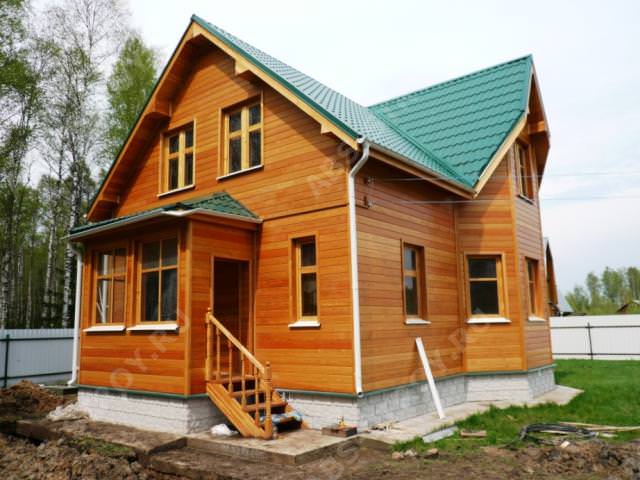
- low thermal conductivity in order to retain and maintain a warm indoor temperature;
- high vapor permeability of the material so that moisture cannot accumulate between the layers of insulation;
- moisture resistance - an obvious quality for outdoor use;
- resistance to temperature extremes and hot or cold climates;
- the presence of an inert reaction to chemical influences;
- a special microclimate so that there are no favorable conditions for the reproduction of pests, fungus and mold;
- preservation of properties in direct sunlight.
Facing material will last a long time, if you do not forget about the need for protective actions.
Plaster as an option for cladding a house
It is often used as a finishing coating on insulated plate options, for example, on foam plastic, fiber cement and others. The main material of the walls is concrete or brick.
Before applying decorative plaster on the walls, you must:

- We install a heater that rests on metal profiles-holders. The thickness of the profile is fully consistent with the width of the insulated material. Dust and dirt are removed from the walls. A specially diluted adhesive composition is applied to the surface of the insulation, after which it is attached to the walls in an ordinary manner. After the glue dries, all corners, window, doorways are glued with a reinforcing mesh.
- We give time for the insulation to dry completely and proceed to the application of a polymer plaster coating on the walls. The layer of plaster on the walls should be uniform and be 2-3 mm.
- The final stage of finishing can be considered the final application of decorative plaster. It must be chosen to your taste, color, texture and arrange in your own way.
Facade trim
The crate serves as an auxiliary frame for applying a decorative coating layer. Its number of layers and the position of the lumber masonry directly depend on the decorative sheathing. 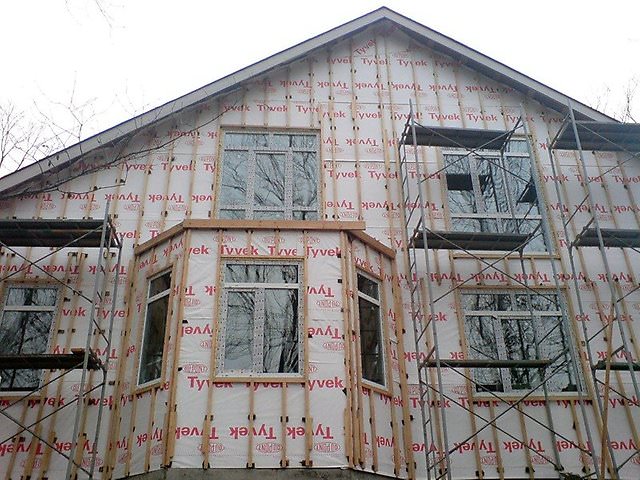
- We mark the approximate location of the bars on the wall. The width between the beams should be such that the insulation can easily fit into the gaps.
- We mount the bars on the wall, fixing them with anchors.
- We make installation of a heater on walls. Next, we stretch the diffuse membrane, fastening it to the crate with construction brackets.
- We breed decorative facing material, apply it over the entire area of \u200b\u200bthe walls and give time to dry.
Another method of crating can be used if desired. It consists in the fact that wooden hangers are attached to the wall with such an interval from it that the insulation fits into the gap. The distance between the bars should be about 60 cm. Thus, the crate has a “U”-shaped shape, on which the decorative decoration of the house from SIP panels or another version of the finishing material is attached.
Types of decorative trim
It is very important to know as much as possible about the facing material in order to skillfully apply it to your home. Outdoor finishing work always starts with the selection of the right material and design planning. Let's look at some options:
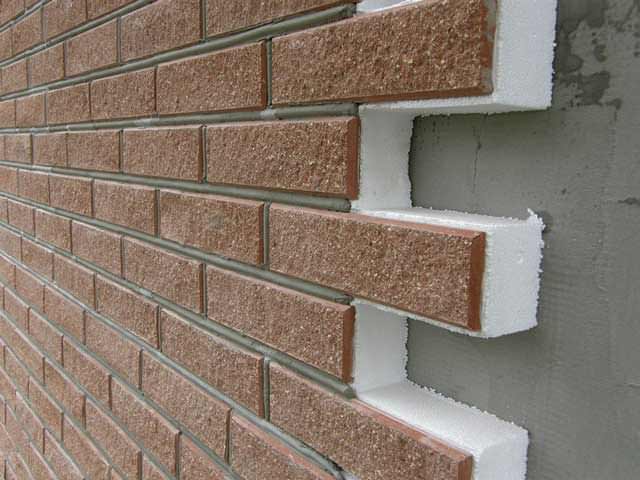
Clinker thermal panels - an option that combines both decorative finishes and wall insulation. One of the advantages of this material is its versatility. The panels are placed to create the visual effect of a brick house. Installation of decorative laying of panels does not require much effort. The uniqueness of the panels allows you to take care of the external walls by washing and cleaning them under a water jet. Clinker tiles are characterized by their reliability, resistance to precipitation and durability. The total service life of the coating can reach 60 years. The shape of the panels can be straight and angular, which calmly allows you to finish all the end and corner elements without much difficulty.
Siding panels
- a popular way to transform walls, imitating masonry or wood cladding. High-quality material is distinguished by its strength, safety in operation, protection from the propagation of pests or fungus and direct resistance to natural precipitation. Note that siding is often chosen by builders, as it does not require frequent maintenance, and if such a desire arises, it is enough to wash it. The structure of the panels may differ: metal structures, wood material, cement-cellulose version of siding or ordinary vinyl.
Natural wood block house , imitating a log house, is perfect for lovers of log structures. Firstly, the surface of such material is environmentally friendly, light and easy to install. Secondly, the block house is characterized by resistance to moisture, temperature extremes and the ability to create a favorable microclimate. Varieties of material are reduced to metal and vinyl structures.
Fiber cement boards made on the basis of fiber-wood. The composition of the panels includes quartz, mica, cement, possibly containing chlorine and asbestos. The final coating of the material is a protective and decorative application of acrylic, hydrophilic or photoceramic coatings. To change the size of the plates, an electric jigsaw is used; for installation, the formation of a crate is required. Thus, the material serves to decorate the house in the same way as siding panels on the outside of the facade or other types of durable decorative coatings.

No less popular type of material for facade decoration - fake diamond , imitated under natural breeds. The use of such material, unlike natural stone, significantly saves money on repairs, and also facilitates installation due to its weight and convenient shape.
Exterior decoration of houses
Having figured out the question of which facade to choose for your home, the following immediately appears: “How to choose the material?”. The basic requirements for all types of cladding have been specified, which means that it remains to determine the coverage depending on the material from which the house was built.
Finishing a wooden house outside
Today, wood remains a very beautiful and high-quality material, but it needs constant care, since the material is most often exposed to external factors. Any owner would like to enclose his house from precipitation, temperature changes, from moisture. For such a case, there is a useful way - facade cladding. 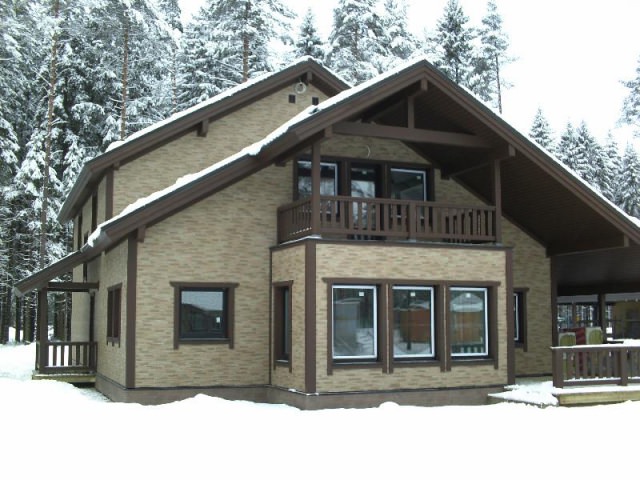
You can start finishing work only after you are convinced of the complete shrinkage of the house. This may take at least a year. Facing, including finishing the house from a bar outside, is needed only when the house is used all year round. Warming the house for country purposes is not necessary, it will be enough to treat the wood surface with protective antiseptics and cover it with varnishes and paints.
External wood finishing is divided into several stages:
- preliminary preparation of the walls;
- installation of a vapor barrier layer;
- creation and assembly of the frame of the crate;
- installation of a heater;
- work of protection against moisture and condensates;
- decorative wall covering.
As for the choice of facing material, it is worth paying attention to the features of the coating. It is important to warn that the material should be light so that the overall load on the foundation does not increase. So, a wooden house will be transformed if it is finished outside:
wooden clapboard:
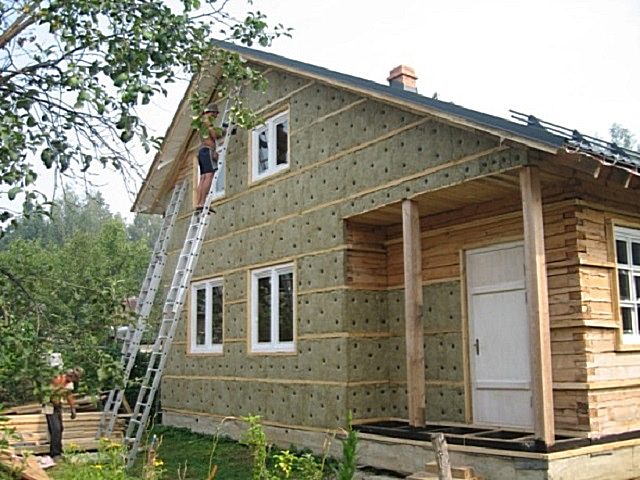
block house:
- made of coniferous material;
- according to the characteristics it is similar to the lining;
- finishing is made under imitation of a log house.
siding panels:
- affordable price;
- easy handling in care;
- there is no need to treat the surface or tint;
- material strength;
- in terms of installation is very convenient.
Home finishing options
The easiest way to finish a frame house is with such facing materials as brick, wood, siding panels, thermal panels, as well as perform a number of other manipulations: plastering walls, painting them, and more. It is important that it is necessary to decide on the type of exterior finish at the design stage of the house, since certain materials must be used for decoration already at the stage of foundation construction.
brick finish
Using natural brick or simulated artificial material is your choice. One thing to consider: the use of natural stone according to the standard rules for finishing the facade can lead to complete destruction in the future. Finishing will not last the expected period, while damaging the frame of the house itself.
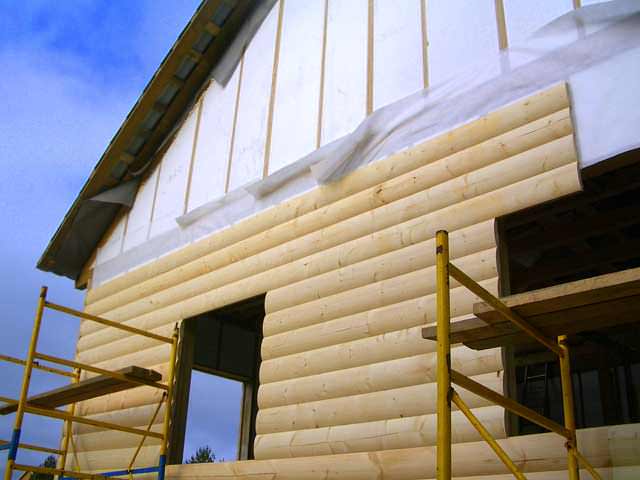
wood finish
Decorating a country house with wood is a less difficult option; it will help the house acquire a stylish and modern “color”. Wooden coverings retain heat quite poorly, so the use of wood as a finish on double-frame houses is recommended. The disadvantage of the coating can be the constant care of the tree, its treatment with antiseptic and protective solutions. For some, this may not be a problem.
Siding
Simple and convenient. Frame houses can withstand the usual fastening of panels from the outside directly to the walls. The material differs mainly in that it does not deform during temperature changes and under the influence of precipitation. The choice of one or another type of siding depends on your preferences.
Thermal panels
The peculiarity of their use lies in their double layer: insulation + decorative coating, which greatly facilitates the work of the master when finishing the facade. Often the choice when finishing a frame house with the owners stops on this material.
Other types of finishing coatings include paint and other polymeric substances. It is important to consider that a material that is specially made for OSB is suitable. We advise you not to use materials from unpopular manufacturers.
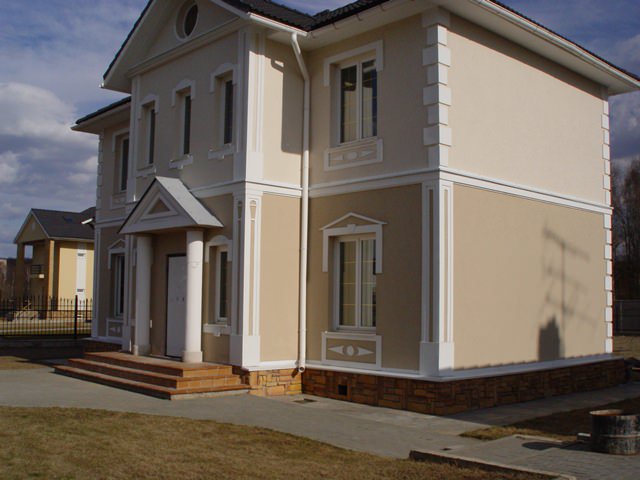
Aerated concrete house decoration
Brick or thermal panels for aerated concrete walls are the best option. The material is considered very durable and creates a special microclimate that is favorable for walls. The advantages of brick finishing a house made of aerated concrete from the outside are:
- affordability of the price for any consumer;
- varieties of variations of decoration and creation of drawings;
- used for low-rise cottages and houses.
An alternative option can be porcelain stoneware or clinker tiles, as well as thermal panels.
Thus, any facade, any material with a variety of the construction market can be protected from weather conditions and other external factors, while ennobling the walls of the house and making them attractive to you and your neighbors. Plan everything in advance and create a unique atmosphere of home warmth, starting with the cladding of the frame of your cottage or country house.